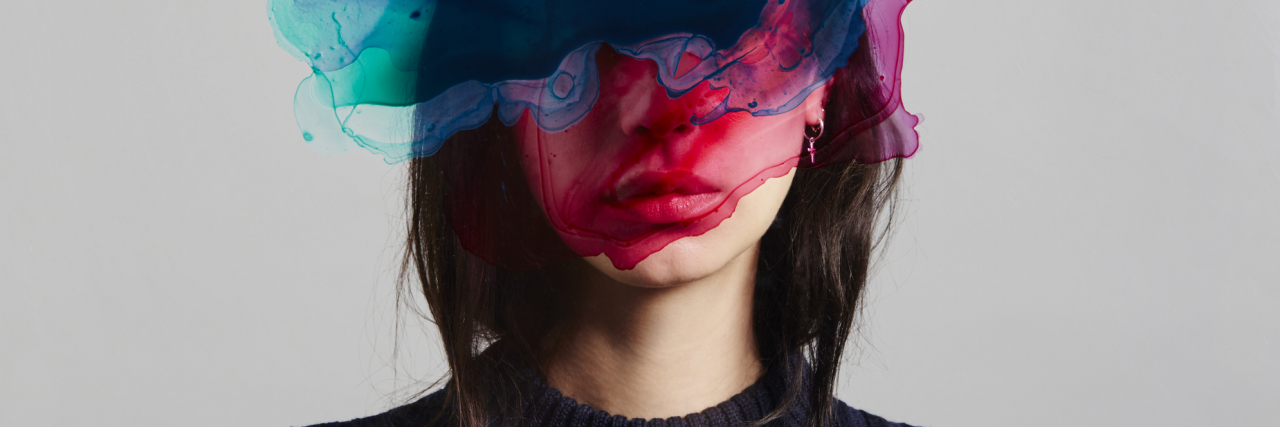4 Ways I've Masked My Borderline Personality Disorder
Editor's Note
If you experience suicidal thoughts, the following post could be potentially triggering. You can contact the Crisis Text Line by texting “START” to 741741.
Even before I received my borderline personality disorder (BPD) diagnosis in my late 20s, I knew I wasn’t quite like everyone else. Even as a teenager, I would encounter classmates and friends who would point out how “weird” or “abnormal” some of my behaviors were, especially as they related to my emotions. So, like anyone else in my situation would do, I learned how to become somewhat of a chameleon to fit in with the crowd or at least get positive attention instead of more criticism.
In fact, here are four ways I’ve masked my borderline personality disorder.
1. I used humor to hide my pain.
Marsha Linehan, the founder of dialectical behavior therapy (DBT), once described the emotional intensity people with BPD live with as like having “third-degree burns over 90% of their bodies.” However, I don’t think most people understand what that actually feels like. Furthermore, most people enjoy a friend who will make them laugh much more than one who makes them cry. So, I quickly learned to use humor to hide my pain as a way to maintain friendships.
Sometimes, on my most difficult days, my friends would see me smiling, laughing, and enjoying life. I also became quite adept at using self-deprecating humor as a way to express my true feelings about myself, but in a way that was more digestible for the majority of other people. Keeping up this type of show is exhausting, though, and it usually makes me feel even more isolated and empty.
2. I’ve “read the room” before displaying emotions.
When you live with BPD, you quickly learn that disclosing your diagnosis isn’t always safe or advisable because the label comes with a huge stigma. However, I have also learned that it’s not just the diagnosis itself, but the symptoms that come along with it that people are quick to judge. In fact, many people see any sort of extreme expression of emotion as “crazy” or “abnormal.” Because of this, I developed a habit of quickly identifying the company I was in before saying or doing anything.
Sometimes this looks like containing my excitement or pretending that a huge accomplishment is really “no big deal” so that I don’t seem too conceited or overly excited. Other times, it means making up excuses for my tears and quickly finding an excuse to “head out” so I can feel my sadness alone. It all just depends on what I’m feeling and whether or not the people around me feel safe, and if so, how safe they feel.
While there are some situations where I do feel safe showing my emotions, it’s usually only with my partner or a couple of select friends. Unfortunately, I have people I consider close friends but whom I have learned it’s best to downplay my feelings around to “keep the peace” and avoid judgment.
3. I used perfectionism to help me look like I “have it together.”
Borderline personality disorder comes with lots of stereotypes. Many people assume that the diagnosis means you’re unreliable, unstable, and highly immature. However, I’ve learned that, once again, I can mask my mental illness by simply doing something that doesn’t fit into that stereotype — I just have to “pretend” to have my life together.
Unfortunately, this has led to strong perfectionistic tendencies. I push myself both in my personal and professional life to “get everything right” because, if I don’t, people may think I’m too “borderline.” So I show up early for any and all meetings and appointments, I go above and beyond with anything I do, and I volunteer to help people even when I’m already drowning in work. It’s exhausting, but at least people think I’m mentally stable?
4. I’ve downplayed my suicidality to not worry others.
I think hiding pieces of myself to appease others is never a great idea. However, I can say that downplaying my suicidality to not worry others is probably one of the worst ways I’ve masked my BPD in the past. I’ve told people that I’m fine while simultaneously actively planning. I have lied about how severe my urges are because I worried that people wouldn’t understand. Worst of all, I’ve lied about what was going on inside my head to crisis counselors just because I didn’t want them to think poorly of me.
Ultimately, despite the different ways I’ve masked my borderline personality disorder, I think that I’ve used all of these for the same reason — to avoid abandonment.
I think many of us with BPD have learned that we aren’t welcome as we are, and as a result, we find ways to make ourselves more appealing to the masses. In my experience, though, this has only caused me more pain and made me feel like nobody genuinely loves me for who I am. I think for anyone who lives with borderline personality disorder, true freedom comes when you can be yourself without putting on a show, wearing a mask, or hiding who you really are.
If you relate to any of this, my hope for you is that you can someday find a person or two who you can let your guard down with and really let them see you.
Getty Images photo via Mads Perch

